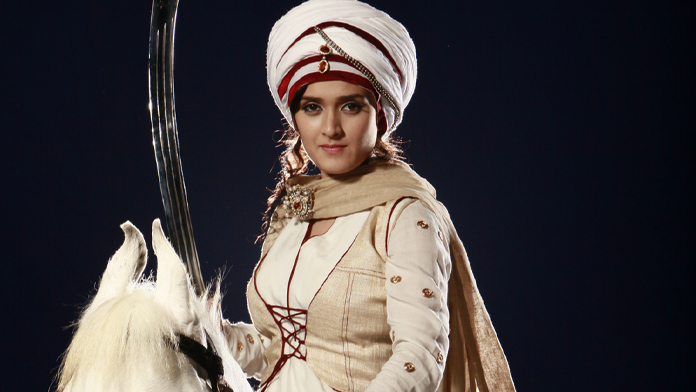

When she took the throne, Razia still wore a veil and kept out of public sight. ( Live History India ) Dressing for Success: Unveiling Delhi’s Only Female Monarch
#RAZIA SULTAN IMAGES MOVIE#
The story of Razia was the subject of the 1983 movie starring Hema Malini and Dharmendra. She was crowned in November 1236 and was given the title Jalalat-al-din Razia Sultan. Rukn-ud-din Firoz and his mother were both executed as a result. The people and army rallied behind her and thus, on the 19 th of November 1236, Razia deposed her brother and seized the throne. Standing in front of her people she appealed for justice, reminding them of her father’s prosperous reign and that he had named her as his heir.

One Friday, dressed in red clothes (the color of protest), she stood before the congregation that had gathered in Quwwat-ul-Islam mosque for the Friday prayers. Razia had not given up her right to the throne.

However, Firoz’s reign was short-lived, as he abandoned his duties in the pursuit of personal pleasure and debauchery, causing considerable outrage among the people. They therefore elevated her brother, Rukn-ud-din Firoz, as the new Sultan, much to Razia’s disappointment. When Sultan Iltutmish passed away on 29 th April 1236, the nobility were not enamored with the idea of a female ruler. Razia’s ascension to the throne was not smooth. Razia’s father broke tradition and did what Hatshepsut’s could not he named his daughter as his heir, capable of ruling independently of any man. Thus, despite her potential, she only got power after she was married off to the future Pharaoh, her half-brother, Thutmose II. Power was supposed to pass to the male heir, to maintain Maat (universal order). She possessed more capabilities than his son, but she could not inherit the throne. The ancient Egyptian Hatshepsut had also been very close to her father, who had valued her highly for her bright mind. It was at this moment that Iltutmish decided to break with tradition and named Razia as his heir apparent, much to the dismay of the nobility. His son, on the other hand, had spent most of his time seeking pleasure. Upon his return he was impressed with how his daughter had managed the affairs of state in his absence. Before leaving on his Gwalior campaign, he left Razia and his son, Rukn-ud-din Firoz, in charge of the administration of Delhi. This caused a dilemma for Iltutmish, who didn’t believe his other sons were worthy of being Sultan, while he saw more potential in Razia. In 1229, Iltutmish’s eldest son, Nasir-ud-din Mahmud, died while fighting against the Mongols. Razia’s training was supervised by her father Sultan Iltutmish. Razia never inculcated the timid and reserved manner of women around her. That meant Razia spent most of her time in the company of her father, maintaining very little contact with the women of the harem, meaning that she had little opportunity to learn the customary behavior befitting a woman at that time and place. Initially, Iltutmish was training his daughter to be a queen, who would be able to stand proudly by her husband. Her training was supervised by her father Iltutmish and Malik Yaqut, an Abyssinian slave. A contemporary 13 th century Persian historian, Minhaj-i-Siraj, sums up the atmosphere when he said: “A queen’s rule went against the ideal social order created by God, in which women were supposed to be subordinate to men”.įrom childhood, Razia was trained in the art of warfare, horsemanship, diplomacy and administration. Women of the era were taught to be submissive to men. Iltutmish celebrated her birth with great pomp and ceremony, going so far as to hold grand festivals. Razia was the only daughter born to the third and greatest Delhi sultan, Iltutmish, and his favorite wife, Terken Khatun. Despite Razia’s short reign, she was able to leave a significant impact upon Indian history. While Razia reigned for only four years, Hatshepsut ruled for more than twenty. Though their lives were separated by centuries, their struggle against a patriarchal society was very similar. It’s easy to see parallels between the ancient Egyptian Pharaoh, Hatshepsut, and the Indian Sultan.

Razia was the first and only female monarch of the Delhi Sultanate. This was a last-ditch effort by Sultan Razia to recapture her throne which had been usurped by her brother. On the eve of October 1240, two armies faced one another ready for battle.


 0 kommentar(er)
0 kommentar(er)
